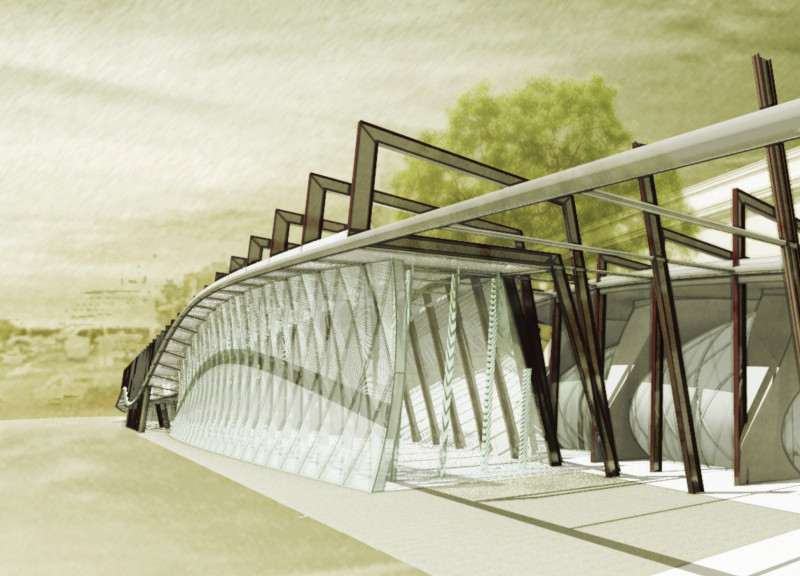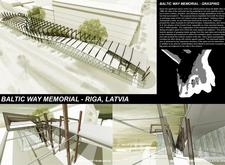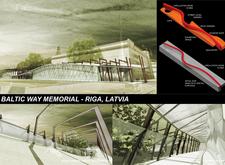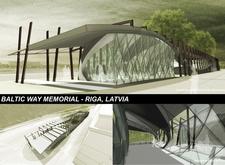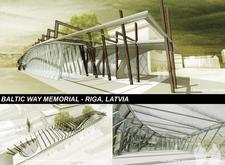5 key facts about this project
### Overview
The Baltic Way Memorial, located in Riga, Latvia, commemorates the significant peaceful protest of 1989, during which approximately two million people formed a human chain across the Baltic states to assert their desire for independence from Soviet control. The memorial serves as a site for reflection and education, aiming to instill a sense of pride and collective memory while fostering an understanding of this pivotal moment in history.
### Spatial Organization
The design employs a central circulation spine that connects various functional areas, facilitating a fluid visitor experience. This includes a designated exhibition space that showcases multimedia narratives and historical artifacts related to the Baltic Way, enhancing educational engagement. Additional areas such as a café and souvenir shop have been incorporated to provide visitors with opportunities for rest and social interaction, enriching the overall context of remembrance. A roof garden further complements the design, creating a space for contemplation and interaction with nature, symbolizing growth and resilience.
### Material Selection
The material palette is carefully chosen to reflect both the memorial’s conceptual themes and structural needs. Extensive use of glass fosters transparency, allowing natural light to permeate the space while providing panoramic views of the surrounding area, symbolizing openness and connection. The inclusion of weathered steel complements the modern aesthetic of the structure and echoes historical significance through its surface texture. Concrete pathways establish a durable foundation, while wood accents introduce warmth and a human scale, balancing the more industrial elements of steel and glass. This thoughtful integration of materials contributes to the striking contrast between the rigid geometry of the steel frame and the fluid lines of the glass façade, enriching the visitors' experience as they navigate through the memorial.


